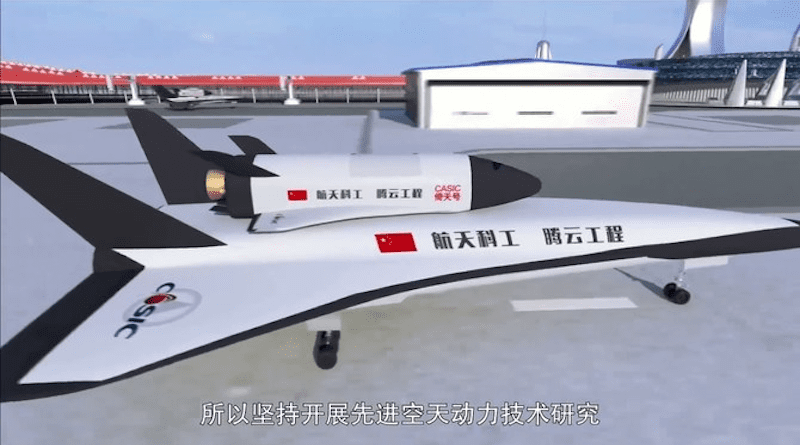Special Space Plane Puts China Ahead Of Competitors – Analysis
China’s ambitious and secretive space plane program is of great interest in terms of possibly filling a gap in low Earth orbit operations. China is using the development of its orbital test vehicle to outpace competitors in a specific strategic space. Given the current economic issues Beijing is facing, proceeding with the space plane appears to be a top priority.
The Chinese space plane is called Tengyun (cloud rider). Another name used is Chongfu Shiyong Shiyan Hangtian Qi. It is an experimental, reusable unmanned spacecraft and is in the early stages of its program, but it has much potential. Since the US thinks that China will surpass it in terms of space capacity by 2040, understanding this type of approach to space and its economy is important.
China is developing the Tengyun so that it can fly from runway to orbit and return to Earth at hypersonic speeds. The craft can be used up to 20 times. The hypersonic space plane boosts China to the forefront of the aerospace industry, eclipsing the capabilities of other competing systems. The China Aerospace Science and Technology Corporation is recruiting the best talent and using the best technology in the country’s aerospace field to support Tengyun.
China is keeping the orbital test vehicle a closely guarded secret. There have been only three known missions. In 2016, China constructed an enormous 5 km runway at the site later known as the Jiuquan Satellite Launch Center in the Gobi Desert. Tengyun took off on Sept. 4, 2020, under unusually heavy secrecy compared with other recent Chinese space missions, which have been quite public, broadcast on television or the internet. On Sept. 6, China announced that the spacecraft had returned to a “scheduled landing site.” The two-day flight added a tremendous amount of momentum to the program. The China Aerospace Science and Technology Corporation called the space plane flight a “complete success,” saying it “marks an important breakthrough” in China’s research into reusable spacecraft technology.
The second trip was much longer in duration: the Tengyun launched on Aug. 4, 2022, and returned on May 8 this year. That was some 276 days in orbit for the unmanned craft. The orbital test vehicle reportedly conducted materials exposure and thermal control coating tests, as well as possibly assessing candidate radiation-shielding materials. It is unknown if any other country exploring space has this type of capability.
Longevity of flight appears to be a unique attribute for this type of space plane. The US has two X-37B vehicles and their first flights measured more than 200 days. One flight, launched in May 2020, saw the X-37B set new records for duration, as it stayed in orbit for more than 900 days. The shorter duration of the Chinese space plane’s flights may indicate that it has a special role in testing hypersonic technologies or other activities related to a high-velocity atmospheric reentry besides robotics. On one of the flights, China released and recaptured an object, which is raising some questions about space plane testing.
Clearly, the Tengyun is a fully functioning and unique space plane that is possibly able to make robotic repairs or deploy smaller spacecraft for space-based defense systems over a multiyear period. This may be quite problematic given the international community’s current arms control and space law requirements. We have to remember that China in 2019 became the first country to land on the far side of the moon, so Beijing’s space ambition is significant for the future space economy and security. Being able to place payloads from a reusable space plane is advantageous and cost-effective.
In addition, some argue that the Tengyun is in competition with America’s Boeing X-37B space plane, which debuted in 2010. Like the X-37B, the Chinese space plane appears to have a specialized engine system and is relatively small. But the Tengyun seems to be more dynamic in its capabilities and potential. The trend lines for the two programs are thought to put the Chinese ahead of its competitor, if the Tengyun data is correct and sustainable.
If the space plane is part of the establishment of China’s first co-orbital anti-satellite platform — a type of kinetic physical space weapon — then there will be arms control and other international legal problems. Such weapons require a projectile or other orbiting object to disrupt targeted satellites. Co-orbital anti-satellite platforms require the ability to adjust their orbits so they can move close to targeted satellites. They can disrupt, damage or destroy satellites through various means. China is known to have conducted such tests before examining debris fields.
Overall, China is making great strides in its Tengyun space plane program. Beijing’s space plane is a low Earth orbit-based platform that has longevity and great capabilities across a range of domains, including both the peaceful use of space and a number of negative possibilities.

